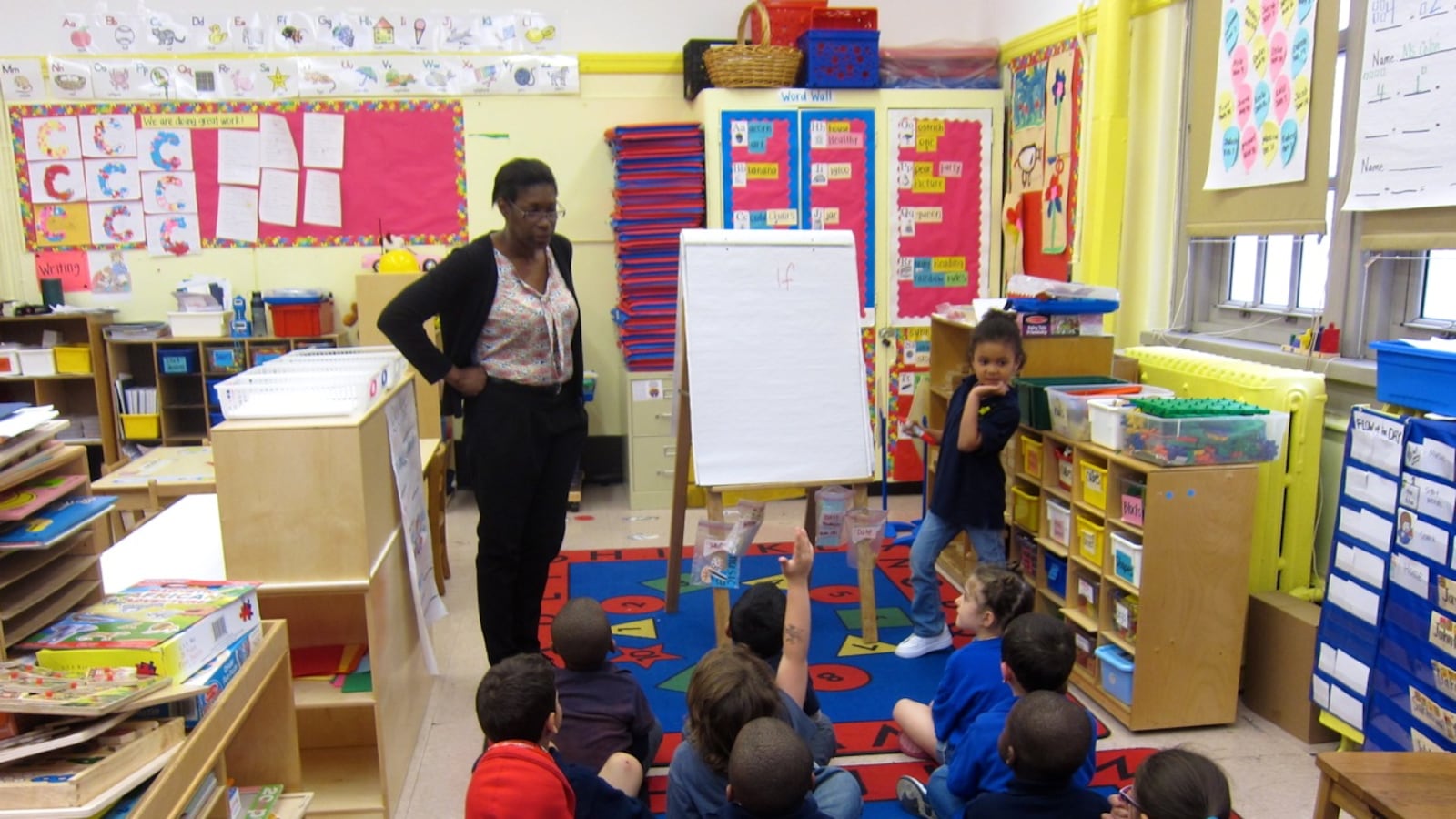New York City’s universal pre-K program is paying off in more ways than one, according to a set of reports released Tuesday.
An independent research firm hired by the city’s Department of Education found that families are highly satisfied with the program, which now serves more than 70,000 students, and that most teachers are happy with their jobs. Notably, the research — which was done with help from New York University — also found that students were gaining measurable academic skills.
Students at the 75 UPK sites studied gained seven months of learning in just five-and-a-half months. More than 70 percent of the children assessed performed at or above national averages in early literacy; in early math skills, it was 62 percent.
But the results also highlight stubborn learning gaps. While all students showed growth over the time period studied, minority children still fell behind their white peers. Hispanic children lagged in all tested areas, while black and Asian students scored lower than white students in early math.
Since the study did not include a control group of students, it’s impossible to say how much children would have learned if they weren’t in pre-K.
“Children naturally learn and grow over time,” the study states. “Therefore, we cannot estimate the extent to which Pre-K for All was responsible for the children’s learning and growth.”
Still, the results provide important baseline information that can be used to improve UPK, said Steven Barnett, a Rutgers University professor and director of the National Institute for Early Education Research.
“These are valid and reliable measures of children’s learning,” he wrote in an email. “By tracking this kind of information over time as well information on classroom practice, the city can determine if they are continuing to move in the right direction and what they need to do to improve.”
Universal pre-K has been a signature achievement of Mayor Bill de Blasio. Since 2014, the city has more than tripled the number of 4-year-olds in free, full-day classes. But education leaders and politicians across the country have closely watched whether the program’s quality could keep up with its breakneck expansion.
According to the study:
— All racial and ethnic subgroups showed better-than-expected growth on measures of pre-writing skills, compared to national norms. Asian students almost doubled their expected growth.
— Hispanic students start pre-K behind their peers in letter recognition, but gained three-and-a-half more months of learning than expected. While black and Asian students started on par with their white peers, they did not meet expectations for growth in letter recognition.
— White children entered school outperforming all other racial and ethnic groups in early math skills. But Asian and Hispanic children grew more than expected, while black children grew slightly less than expected.
— Children whose primary language at home is not English entered school behind their peers in all subjects and remained behind them. However, they made better-than-expected gains in all areas.

